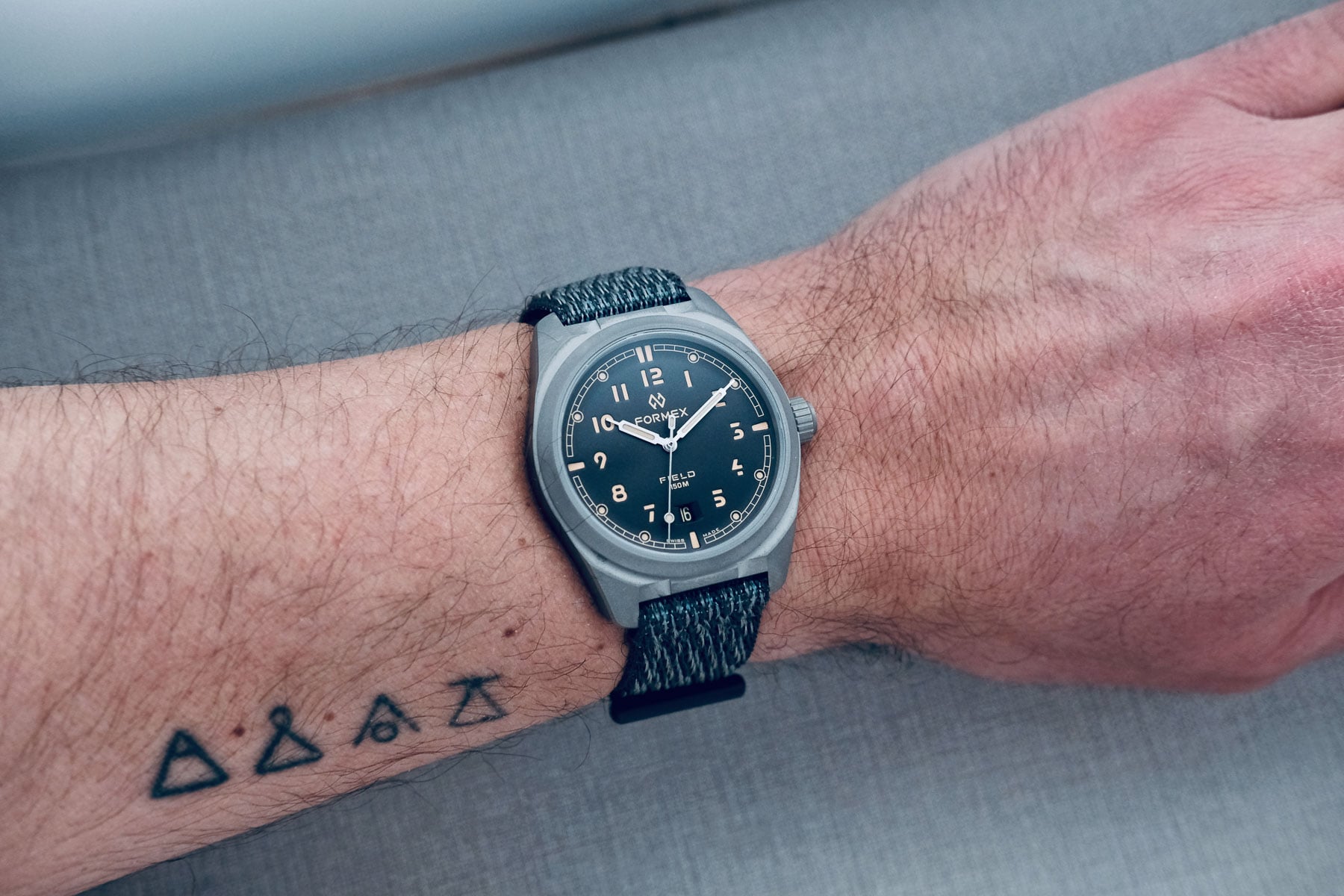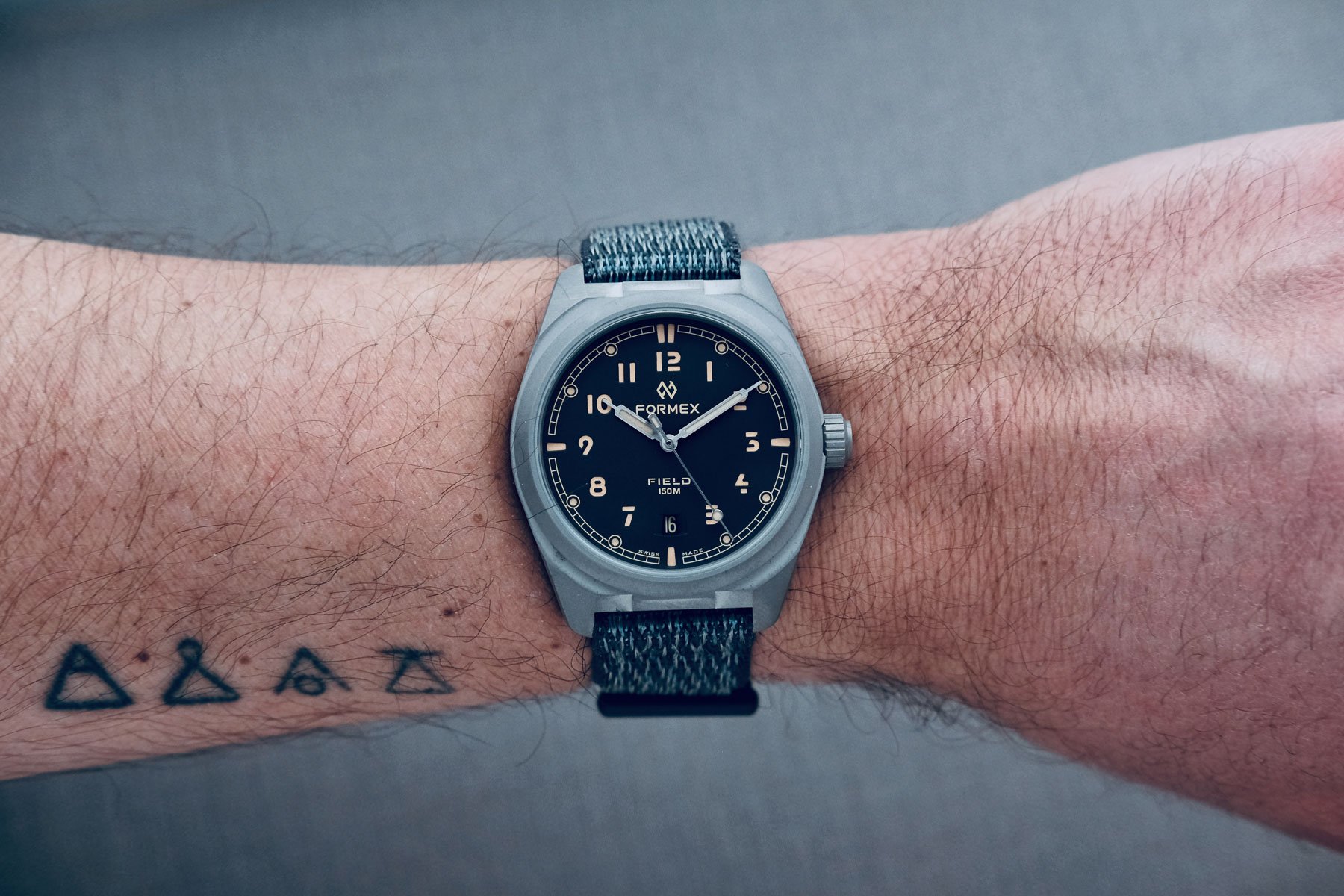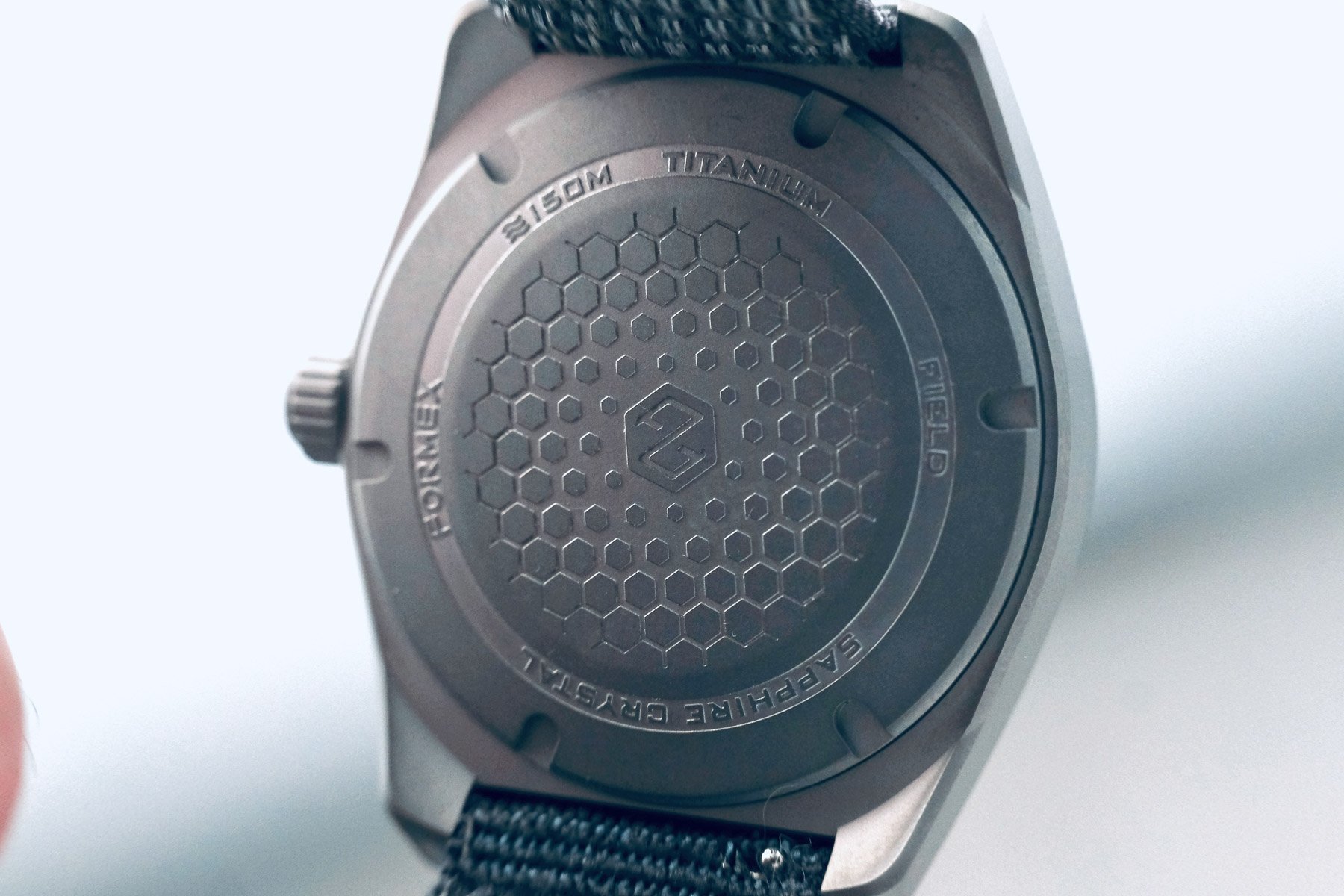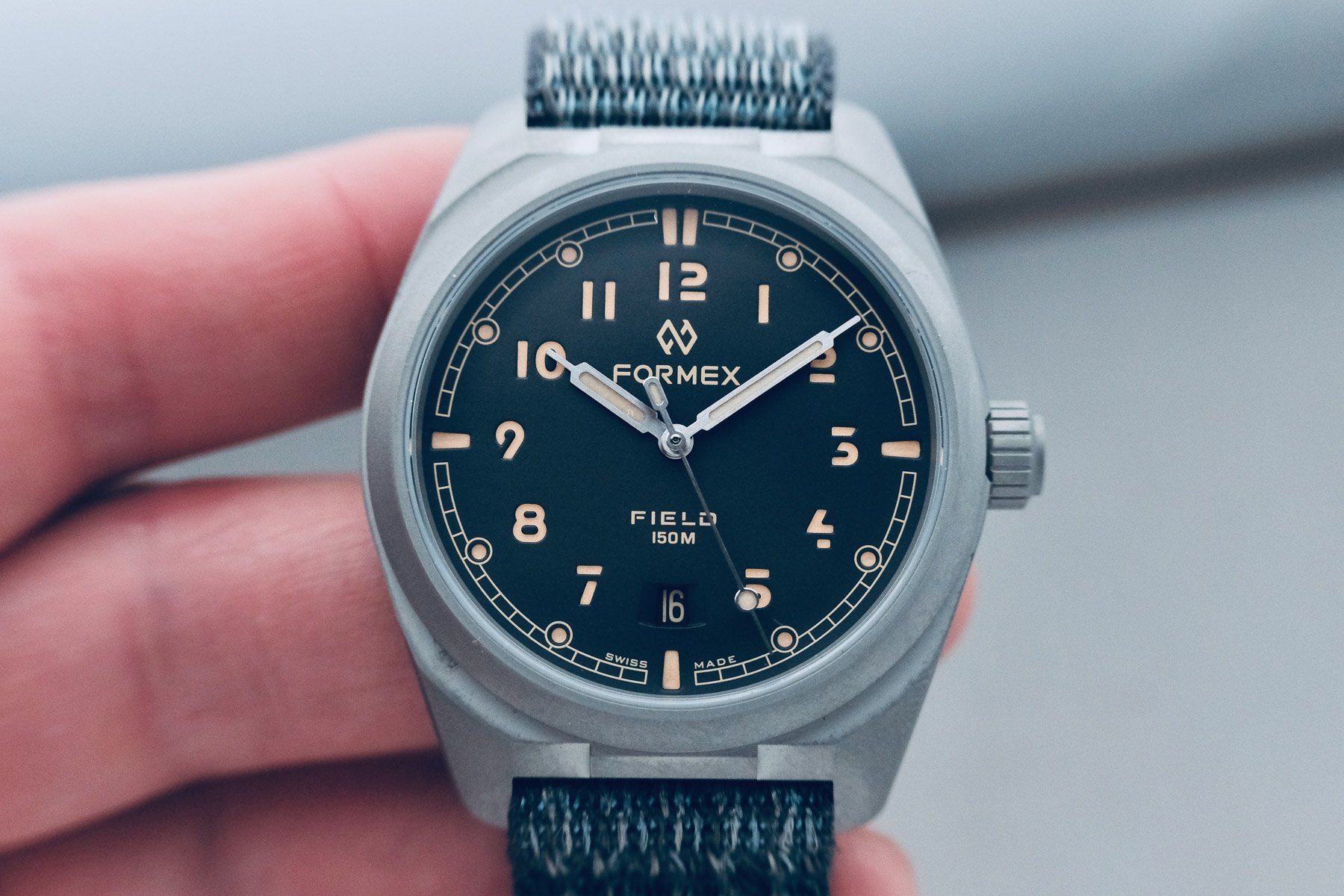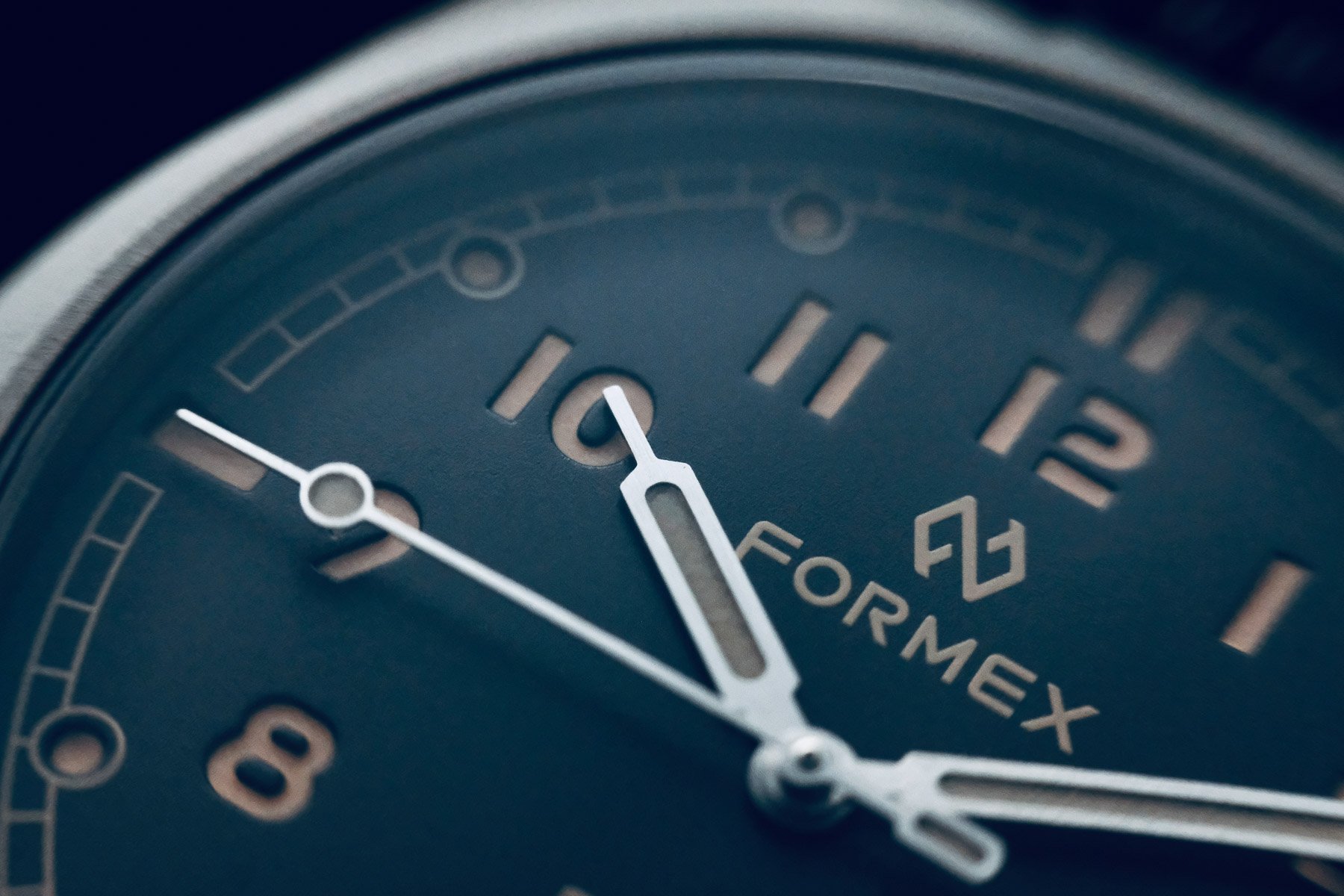Hands-On With The Formex Field Automatic
There is something prevalent in the watch world: brands use specific design elements across every model in their collections. This makes it easy to identify that a specific watch was made by a particular brand. This is not necessarily a bad thing. In a way, it guarantees that people will be happy with whatever new model they purchase from said brand. However, other brands can be recognized by the fact that each model is different, not only in terms of design and specifications but also in the use of new technology. This strategy is ballsier because such brands run the risk of dividing their fan base. This brings us to Formex and the Field Automatic.
Formex went through a revival a few years ago, which has brought the brand to the attention of many watch enthusiasts. There is no shortage of reviews on recent Formex models on Fratello. I recommend Thomas’s excellent review of the Reef GMT as well as Bert’s review of the Essence ThirtyNine. However, most Formex models reviewed on Fratello belong to the expansive Essence collection. So writing about the Field Automatic, a 41mm titanium sports watch, will hopefully demonstrate the point I made above. Without further ado, let’s take a closer look at this modern-day field watch from Formex.
A mechanical G-Shock?
I owned a G-Shock for about two weeks before I got rid of it. What I liked about it was that it was light, unbreakable, and precise. What I didn’t like about it was the fact that…well, it was not my thing. It was too much plastic, too big, and too digital (sorry, G-Shocks fans!). So I have long thought that it would be neat for a brand to make a mechanical equivalent of a G-Shock. You know, something not as big and not made of plastic but equally as light and reliable. Well, at least to the extent possible for a mechanical watch that doesn’t cost an arm and a leg. I dare say that the Formex Field Automatic fits the bill.
This watch has a few details that would make me comfortable to use it as someone uses a G-Shock. In other words, by passionately putting it in dangerous situations and not giving a damn about it. To do so, a watch should be light, robust, and able to withstand wet stuff and pesky dust particles. Perhaps a case made of titanium? Maybe a nylon Velcro strap? Perhaps 150m water resistance? And lastly, how about a robust Swiss-made movement? Well, you see where I am going with this. I didn’t know that a mechanical watch could ever replace (in my eyes) a G-Shock, but here we are.
But before we continue, I would admit that not everyone can afford to use a Formex Field Automatic as a beater. It retails for between €760 and €920 depending on which strap you choose. In comparison, a G-Shock “CasiOak” costs around €100. That said, since we all have different budgets and horological philosophies, let’s assume the Field Automatic could be someone’s beater watch.
Light as a feather, robust as a rock
The neat thing about using titanium for a watch case is that it’s light and robust. Formex uses Grade 2 titanium that is endowed with a sand-blasted finish to keep scratches at bay. On the supplied nylon strap, the whole watch weighs 65 grams. That is only 14 grams heavier than the G-Shock GW-M5610-1 and 90 grams lighter than your average Submariner. That’s quite remarkable for a mechanical watch and not a quartz-powered one. Plus, weighing under three digits on a scale is a big plus for a beater watch.
As mentioned above, titanium is also solid. According to people who are more intelligent than me, titanium is 45% lighter than stainless steel. Furthermore, it has the highest strength-to-weight ratio of any metal. Yes, the highest grade of stainless steel is stronger than any grade of titanium, but it is also much heavier. This explains why titanium is used in horology and for sports watches in particular. You get the best of two worlds with titanium. That said, however light and strong the case of the Field Automatic is, what also matters is how the rest of the watch is made.
Beater-level specifications
Okay, so what else makes the Formex Field Automatic a potential mechanical equivalent of a G-Shock? First, let’s talk about the movement. This watch is equipped with a Swiss-made Sellita SW200-1, which we are all most likely familiar with. This caliber beats at 28,800vph (4Hz) and comes with 26 jewels and a 38-hour power reserve. Okay, that’s nice, but what else? Well, the Sellita 200-1 comes with built-in shock protection — either Novodiac or Incabloc — that supports the balance wheel. Furthermore, the mainspring is made of something called Nivaflex, which is said to be paramagnetic. Lastly, the SW200-1 can be repaired by any competent watchmaker anywhere in the world.
Although I could have gotten all the technical aspects wrong, the point I was trying to make is this: choosing the right movement is critical to making a watch into a mechanical G-Shock candidate (as always, feel free to correct me in the comments below).
Besides the movement, the Field Automatic also comes with a famously scratch-resistant sapphire crystal with an antireflective coating on the underside. It also has a screw-down crown and case back and a 150m water resistance rating. The recessed numerals on the dial allow for plentiful lume, and Formex uses “Old Radium” Super-LumiNova to throw in a bit of a vintage vibe. While you can buy the Field Automatic on a variety of leather straps, I recommend the nylon one. This strap is light, comfortable to wear, and breathable. The Velcro closure also allows the strap to be adjusted to any wrist size and tweaked throughout the day.
A few notes on the design
Coming in with a case diameter of 41mm, a lug-to-lug of 46.6mm, and a thickness of 10.6mm, the Field feels thin. While I find it a tad too large diameter-wise for my 16cm (6.25″) wrist, its short lug-to-lug span and 65g total weight make it rather comfortable to wear. Formex does have a knack for making cases over 40mm+ wear well even on smaller wrists. This is due, in part, to them having short lugs that turn downward and a flat sapphire crystal. Furthermore, the crown is rather small but easy to grab and operate thanks to its deep knurling. All of this put together, the package is rather compact despite the case diameter.
Looking at the dial, we see an almost-complete set of stencil Arabic numerals and syringe-style hands. This combination is legible and very “field-watchy” — I know, big surprise, right? As mentioned above, the dial has recessed luminescent markers. These make it look almost like a two-layer sandwich dial, though, in reality, it isn’t. Nevertheless, this construction accounts for the brightness of the lume and adds a subtle dimension to an otherwise flat dial. Furthermore, the railroad minute track has the same color as the lume, creating visual harmony. A date window is nestled at 6 o’clock and comes with beveled edges.
Final thoughts
However enthusiastic I may be about the Formex Field Automatic, I do admit that dishing out €760 to €920 for a “beater” watch is not too realistic for me. A €100 G-Shock will be just as resistant to shocks and scratches as the Field Automatic, perhaps even more so. And breaking or losing a €100 G-Shock will be less traumatizing than if it would be with a Formex. However, if G-Shocks are not your thing and you have a bigger budget, why not get a Formex Field Automatic? Of course, these are only my thoughts. I would like to hear yours in the comments below.
As a final note, the Field Automatic comes in six different colors — Ash Grey (presented here), Charcoal, Mahogany Red, Petrol Blue, Ultra Violet, and Sage Green. For more information on each one, visit the Formex website.


